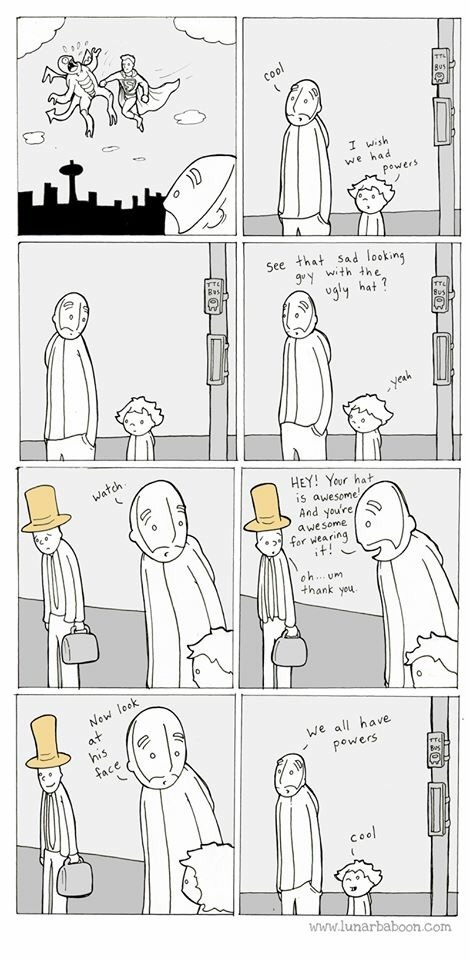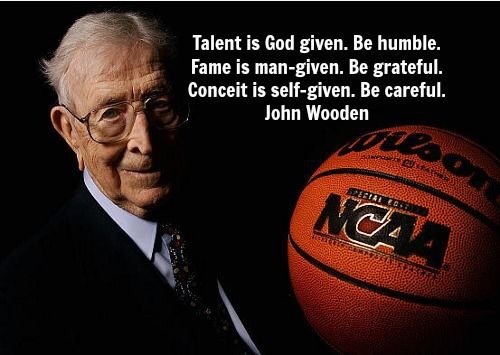Entrepreneur & Investor in Health, Wellness, Advertising & Creative Agencies, some public, some stealth. I'll use this blog to write about things that concern me, things I find beautiful, my passions, technology, creativity, advertising, and health & wellness. If found return to @binijacob You'll catch me in FL/NYC/NJ. about.me/brianjacob
Don't wanna be here? Send us removal request.
Quote
You dont have to see the whole staircase, just the first step.
0 notes
Text
“Impact Beyond”: Crafting Lasting Impressions That Outlive the Moments

In a consumer world saturated with brands trying to command attention, it’s no longer enough to push out products or catchy slogans. Today’s customers—and especially millennials—crave experiences that linger well beyond the point of sale. They want vivid stories, genuine connections, and shareable moments that resonate on social media. These moments, when crafted thoughtfully, echo long after someone closes a website tab, exits a conference, or finishes using a service. That ripple effect is what I’m calling “Impact Beyond.”
This concept describes the continuing influence a brand leaves on an individual after an interaction—whether that’s a conversation with a team member, a business card exchange, or even an empathetic moment overheard at a coffee shop. Impact Beyond isn’t just about delighting people in the moment; it’s about ensuring the impression made endures, prompting them to become repeat customers, share their experience with others, or even advocate for your brand. In this post, we’ll explore the powerful role of “experience” in modern marketing, the rise of the “experience economy,” and how to capitalize on both expected and serendipitous touchpoints to build meaningful, lasting customer relationships.
Why Experiences Matter More Than Ever
Millennials and the Experience-First Mindset
According to the Harris Report, “72% of millennials prefer spending money on experiences over material things.” Rather than saving up for designer handbags or luxury cars, this cohort invests in pop-up dinners, weekend trips, and music festivals. It’s not only about escaping routine but also about storytelling: experiences create narratives to share on Instagram or at the next family gathering. Seeing a friend post a beach selfie in Bali can spark the competitive—or simply curious—urge to book one’s own tropical adventure.
This shift aligns with our intrinsic desire for social connection and personal identity. Where older generations might have defined success by accumulating tangible assets, millennials (and many Gen Zers) frame success through experiences. That transformation has forced brands to move beyond transactional offers toward more engaging, memory-making encounters.
Social Media’s Amplifying Effect
Underpinning this generational trend is social media—Facebook, Twitter, Instagram, TikTok—platforms that reward “share-worthy” moments. People don’t just want to passively consume products; they want to capture and display them, becoming co-creators of brand narratives. This user-generated content has real marketing value: a single impactful encounter shared online can prompt dozens of new customers to try your brand.
The “Experience Economy” in Action
The Harvard Business Review defines an experience as a scenario where “a company intentionally uses services as the stage, and goods as props, to engage individual customers in a way that creates a memorable event.” In simpler terms, businesses that thrive today don’t just sell things; they sell memories.
In such an environment, focusing solely on features or price becomes limiting. Companies find more success by highlighting how a product or service makes people feel or how it improves their lives. That pivot has led many marketers to hail experiential events as one of the most effective ways to break through our busy digital landscape. Customers bond with brands that give them something to remember—and to share.
Key Touchpoints That Shape “Impact Beyond”
1. The Booth at a Show
Expos and trade shows offer a prime chance for real-life, hands-on engagement. A booth that’s well-designed, interactive, or fun to photograph can boost a brand’s memorability. If attendees encounter staff who are warm, knowledgeable, and enthusiastic, that feeling can stick long after the event—especially when they post about it online.
2. The Business Card
In an age of LinkedIn connections and digital invites, a physical business card might seem old-school. Yet a cleverly designed one—using interesting textures, typography, or environmental materials—can still spark excitement. When someone unearths it from their wallet weeks later, they’ll instantly recall the conversation or the personal connection they had with your representative.
3. Presentations and Office Visits
A stellar presentation can transform a forgettable meeting into a highlight. Whether delivered at a conference or during an office pitch, an engaging narrative can captivate an audience. Moreover, inviting clients or partners to your workspace offers another powerful window into your brand culture: open, collaborative spaces and a warm welcome can speak volumes about your values, leaving a long-lasting impression.
4. Actual Use of Products and Services
Perhaps the most direct brand touchpoint is the experience of using your core offering itself. Whether it’s a software platform or a physical product, a frictionless, intuitive design fosters a sense of delight. Consider Apple’s unboxing experience—packaging, product arrangement, and design synergy combine to make unboxing videos a viral phenomenon, proving that the journey doesn’t end at the point of purchase.
5. Social Media, Advertising, and Blogs
Digital channels are often where brands tell their stories at scale. Authentic, engaging, and human content—be it an inspiring quote, a user testimonial, or a fun behind-the-scenes reel—can resonate widely. Social platforms double as conversation hubs; by responding thoughtfully to comments or re-sharing user-generated content, you cultivate relationships that grow stronger with each interaction.
6. The Hiring Experience
One often-overlooked branding moment is the recruitment process. How you treat job applicants reflects your organization’s ethos. A warm, transparent hiring approach can turn even rejected candidates into fans, while a poor experience can sour someone on your brand forever. Since employees can be your biggest brand advocates, a positive recruitment journey has ripple effects across social networks and professional circles.
7. The Serendipitous Encounter
Not all interactions happen in structured or predictable environments. Sometimes, a brand’s Impact Beyond is forged in the most unexpected moments—a brief conversation in an elevator, overhearing a supportive customer service call while waiting in line for coffee, or a spontaneous connection at a networking event that wasn’t on the agenda. These serendipitous encounters can be surprisingly powerful because they catch people off guard and feel exceptionally genuine. In a fleeting moment, a brand representative might show empathy, share a quick insight, or offer help. Such genuine human gestures often leave a strong impression long after the moment has passed.
Spontaneity Builds Trust: When people sense an interaction is unscripted, they’re more likely to believe in its authenticity.
Human Connection: Empathy or kindness shown in a random encounter tends to feel more real than a carefully orchestrated campaign, reinforcing the idea that your brand is composed of real people who genuinely care.
Memorable Stories: These anecdotes easily turn into shareable tales—“I was in line at the cafe and happened to chat with someone from X company. They were so helpful!”—amplifying your brand’s reach through authentic word-of-mouth. A spontaneous show of goodwill feels more genuine than the most polished marketing campaign, further embedding a sense of trust and fondness toward the brand.
Creating Memorable Moments
Design for Delight Surprising someone in a small but meaningful way can turn a neutral experience into a joyful memory. It might be a handwritten thank-you note after a client call or a playful quiz at your expo booth. These micro-moments tap into human emotions, making interactions feel personal rather than transactional.
Be Authentic and Tell Stories In an era brimming with content, authenticity stands out. Instead of boring bullet points about product features, craft stories around real people, real challenges, and real breakthroughs. Consumers gravitate toward narratives that align with their values or intrigue them—stories they can retell, share, and associate with your brand.
Personalize and Empower When customers feel recognized as individuals, they’re more inclined to trust and advocate for a brand. Personalized product recommendations, thoughtful follow-ups that acknowledge a past conversation, or soliciting feedback for product development (and genuinely using it) elevate your audience from passive recipients to co-creators of your brand experience.
Turning Transaction into Transformation
Evolving Retail Spaces
Traditional retail isn’t dead—it’s simply evolving. Brick-and-mortar stores that function purely as product warehouses struggle against convenient online marketplaces. To stand out, physical locations must offer more: a sense of community, specialized expertise, or an immersive environment that can’t be replicated at home. Think of Sephora’s makeover stations or REI’s indoor rock-climbing demos. These experiences feel more like theatrical events than standard shopping trips.
Retail-as-Theatre
Imagine your store as a dynamic stage. Music, lighting, product demonstrations, even in-store brand ambassadors all contribute to the “show.” Whether you’re creating a minimalist Zen atmosphere or a lively pop-up carnival vibe, the emotional undercurrent can differentiate your brand from competitors. The more senses you engage, the more memorable the visit—and the more likely people are to share it on social media.
Co-Creation and Community
From craft breweries asking customers to name new beers to software platforms hosting hackathons, many brands involve their customer base in co-creation. When people feel their voices shape a product, they develop a stake in its success, effectively becoming brand advocates. This sense of ownership strengthens loyalty and fosters vibrant, self-sustaining brand communities that can persist for years.
Measuring “Impact Beyond”
Net Promoter Score (NPS) A quick, overarching measure of whether people would recommend your brand is valuable. While it can’t capture every nuance, a strong NPS signals that customers have positive experiences. A dip, however, might indicate friction points in your brand journey.
Engagement and Sentiment Instead of focusing on sheer volume (e.g., likes), pay attention to quality—comments, shares, and heartfelt testimonials. These deeper engagements often signal a stronger emotional bond. Also keep an eye on mentions and reviews outside your official channels; unsolicited praise can be a potent sign your brand is making an impact.
Community Growth and Advocacy Track the size and activity of any brand community you cultivate—be it a Facebook group, a forum, or a local meetup. High-quality discussions, user-generated tutorials, and organic referrals suggest you’re creating ongoing resonance, a hallmark of Impact Beyond.
Challenges and Considerations
Balancing Physical and Digital Some customers prefer online efficiency, while others yearn for human connections offline. Successful brands strike a balance, ensuring consistency across channels so that messaging, design, and customer service feel cohesive and reliable wherever consumers interact.
Avoiding Gimmicks The hunger for immersive experiences can tempt companies into creating hollow stunts. Audiences are quick to spot superficial theatrics. Experiences must spring from genuine brand values, or risk eroding trust.
ROI and Timing High-quality experiences can require substantial investment. While some yield immediate returns in sales or publicity, others build long-term loyalty that’s trickier to measure quarter-by-quarter. Nonetheless, brands committed to Impact Beyond view it as a strategic investment in future goodwill and market presence.
Looking Ahead: The Future of Impact Beyond
Sustainability and Social Good As environmental and ethical concerns grow, experiences that align with social impact will resonate strongly. Brands that integrate sustainability into their events, packaging, or philanthropic efforts forge deeper emotional connections. Planting a tree for each purchase or hosting cleanup events can unite communities under a shared cause, extending brand advocacy far beyond a single campaign.
Extended Reality (XR) Emerging AR, VR, and mixed reality tools promise unprecedented ways to engage with customers. Imagine a fully immersive virtual store or the ability to preview furniture in your home using an app. These technologies stand to raise the bar, letting companies deliver experiences that transcend physical constraints.
Gen Z and Beyond Younger generations have grown up with an “experience-first” mindset. They increasingly expect authenticity, inclusivity, and ethical behavior from the brands they support. As they enter the workforce and consumer sphere, their preferences will continue to shape—and elevate—the standard for meaningful, memorable brand encounters.
Creating Impact Beyond means ensuring that the resonance of any interaction lingers long after the sale, pitch, or handshake. It’s about connecting on a human level, sparking positive emotions, and weaving memorable threads into someone’s day. Today’s audience is bombarded with choices and distractions; standing out requires more than product excellence or pithy ads. It demands that we craft genuine experiences—some intentionally staged, others arising from “serendipitous encounters”—that touch people’s hearts and spark conversations.
Whether you’re revamping a trade show booth or rethinking your hiring process, remember that each touchpoint offers a moment to delight. By embracing authenticity, empathy, and creativity, you transform casual interest into enduring loyalty. And while success in the experience economy might not always reflect instantly on profit-and-loss statements, it builds a reservoir of goodwill that can power your brand into the future.
The brands that understand this shift—who invest in designing experiences worth talking about—will thrive in an increasingly crowded marketplace. Ultimately, Impact Beyond is more than a clever marketing approach. It’s a commitment to leaving every person you encounter feeling a little more inspired, connected, or cared for. And in an age that often prizes novelty over substance, that kind of human touch is what people remember, share, and return to time and again. -Brian
0 notes
Text
Selling Through Experiences: The Art of Emotional Connection

In the world of business, it's not just about the product or the price. It’s about experiences.
Recently, a colleague who admired my ability to close deals asked, “How do you do it?” My answer was simple: I don’t sell products or pitch hard. I don’t pressure clients, and I’m not afraid to say no to someone who doesn’t understand the value I bring to the table. Instead, I sell experiences.
Here’s what I mean.
The Power of Experiences Over Features
To illustrate my approach, I gave my colleague an example outside of our field. I asked him to imagine I was a real estate agent.
The product? A house. At its core, it’s just walls, rooms, fixtures, and floors... a structure with a hefty price tag. But that’s not how I would sell it.
Instead, I’d start by asking myself: Why would someone need this house?
My wife has been encouraging me to leave high-rise living for a house. At first, it was about having more space for our kids. But then it became about something deeper—an enriched lifestyle filled with memorable experiences. She’d say things like:
“Imagine the BBQ parties we could host in a backyard with an outdoor kitchen and pool.”
“Think of the amazing Thanksgiving and Christmas gatherings we’d have in a spacious living room.”
“I’d love more space to organize my clothes and expand my wardrobe.”
“Double sinks and a larger bathroom would make our mornings so much smoother!”
These comments weren’t just about the physical features of the house... they were about the life we could create there.
Selling Experiences, Not Features
So, when I sell, I focus on these emotional connections. If a mother of three walks into the home, I tailor my pitch to highlight what would resonate most with her:
“With this open-concept kitchen and living room, you can keep an eye on your kids while you’re cooking dinner.”
“The backyard is perfect for family time, complete with a built-in playground for the kids to enjoy.”
“Laundry machines are conveniently located upstairs, so you don’t have to lug baskets up and down.”
“And after a long day, imagine unwinding in the spa next to the pool.”
By doing this, I allow her to envision the experiences she could have in the home, rather than focusing on the granite countertops or the number of bedrooms. It’s about creating an emotional connection, not just listing features.
Why Emotions Matter More Than Logic
Here’s the key: Rational thinking leads to conclusions, but emotions drive action. While rational thinking often results in conclusions... and subsequently more meetings and committees. Emotions such as anger, sadness, love, nostalgia, laughter and joy spark immediate action. Emotions hold unparalleled power.
The Takeaway: Make the Emotional Connection
When you attach experiences to what you’re selling, you give people a reason to act. You make it personal. Whether you’re selling a home, a car, or a service, the principle is the same.
Products don’t sell themselves. Features might draw interest, but experiences close the deal.
So, next time you’re in a sales situation, ask yourself: What experiences can this product or service bring to the client’s life? If you can paint that picture, you won’t just make a sale... you’ll create a lasting impact.
-Brian
0 notes
Text
Future of Co-Working
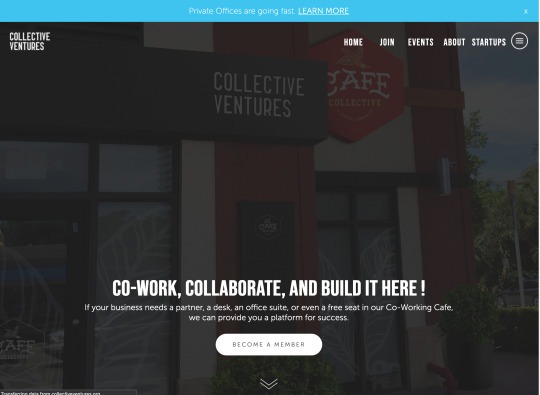
I start out most days with a few emails, then breakfast for the boys, then setting up their iPads so they can e-learn which always turns into movie time at some point. It’s the only way I can get dedicated time to accomplish my tasks and take calls. At various points through out the day, I am interrupted to troubleshoot their technical issues, handle their “school from home” concerns, and address their growling bellies. Sometimes I feel it’s not so different than when I’m at the office. That got me thinking… what will all the new norms be with my ability to work, and our capability to provide a safe working environment to our members at Collective Ventures?
As an owner of a co-working & collaborative space in Downtown Ft. Lauderdale, FL… I have been struggling with the thought of what the future of my business would be post Covid. We’ve been closed for 3 months, and our members have been focused on their health and families as they navigate this new normal. This new normal may impact my business significantly if no one wants to come back for months or longer. What can we do to pivot, how do we navigate WFH (Work From Home) as a co-working space, and how do we still remain a resource for our members?
For now, figuring out how to work from home effectively has become a challenge for some, but a success story for others. Implementing any large change to your life or business is a daunting task. One of my first companies was an EMR software that would enhance a Physician’s ability to manage medical records electronically and make their lives much easier. Implementing the solution and the ramp up time for staff to learn how to use the product took time. It’s one of the many reasons EMR adoption was so slow.
But because Covid put everyone on notice immediately, we had no choice but to learn how to adapt. Most of us work from home now, often times with our families in tow, and many of us with kids to home school. We don’t have our typical resources, or teams. We end up with many distractions but must function as if nothing was wrong. And here’s the thing… after our own implementation period, we’ve gotten very good at it. Productivity reports from many large companies show no drop in productivity. In fact we are seeing the opposite. Employees are given time to work at their own pace and in their own time slots, and we are seeing better results. Just one caveat… some employees don’t know how to make the distinction between work time and family/self-time, and are overworking. But companies are trying to find balance by providing additional days off, counseling, or other strategies.
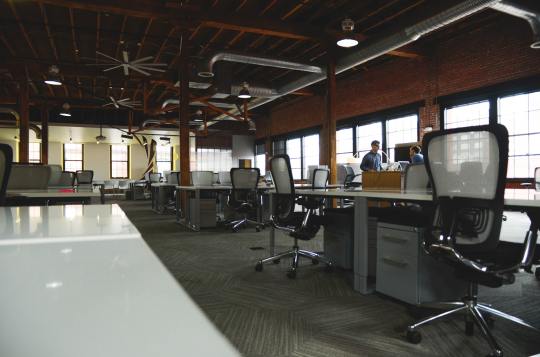
So what now with offices?
Many companies are saving Hundreds of Thousands to Millions on their overhead costs yearly. It’s tough to go back. Those funds can be spent to acquire more clients, or increase staff salary. Huge positives to the P&L statements and growth of your brand.
Many companies realize there is no reason to have their employees come to work outside of having some control over them. They believed that if those employees got to work from home, they wouldn’t work. That was proven wrong. This has even increased their efforts to hire virtual assistants and staff, and outsource work to other parts of the country or other countries all together.
The tech finally accommodates this. With a hybrid of Phones/Email/Teams/Slack/Zoom/Citrix or some combo of those utilities, all work can get done. We all have faster internet at home, and even with tethering, we can manage to get by with fast cellular service and the mini computers we call cell phones. It took a bit of getting used to, but we are there now.
Companies that typically show off space like Legal, Financial firms, Creative Agencies are finding a way to work without it. The results are the milestones clients want to see. Not that there is a ping pong table at your office, or the board room has the best tech and is stocked with Fiji water.
Even Law is being practiced over Zoom, and everyone is okay with it. If the Judge is cool with it, who are we to disagree.
Many companies have already taken a long term stance on it. Facebook, Twitter, Google and many others have already opted for WFH forever for the staff that want it. Some like Twitter and others are making it a company wide mandate. Others like Google are providing cash bonuses to work from home so their employees can build out custom home offices.
We’re going to have to get used to this new norm for traditional businesses. Of course hospitality, retail, and a few others will have to go back to business as normal in some capacity. But for many firms, this is life altering. It is going to be tough to work in open space areas with so much uncertainty about our health. Teams will feel comfortable working with each other, although some with trepidation. With so many unknowns about this disease and future iterations of it, we have to find new norms, and we have to think quick.
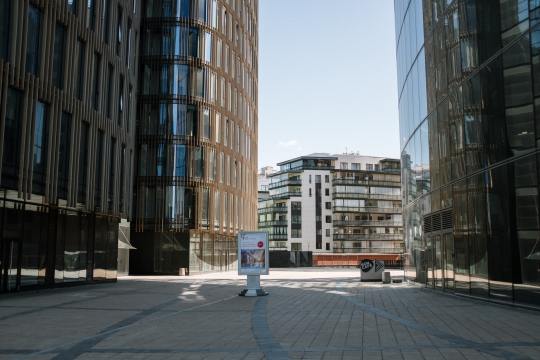
Commercial property is tanking in most places, and will continue to do so. Rents will become cheaper. Many companies are leaving the city and going into suburbia. There are going to be many new alternatives to choose from. Large spaces will break their space into smaller offices. Retail spaces will become open for more creative companies, and so on.
Boutique offices: I think large companies will opt for smaller boutique offices to use for large meetings, to show off to potential clients and for creative sessions. Saving so much from their old office space will allow them to do more with a smaller space. Add additional screens, and Gigabit internet speeds, additional services staff etc.
Private offices in shared spaces: Co-working spaces like mine will have to adapt to become mini offices for companies instead of open space arenas for the individual or sole proprietor. Those folks for the most part have found new ways to function as they built out their own private offices at home. This can be a great option for companies that have downsized but need dedicated space somewhere.
Timesharing office space: I feel that some companies that have similar offerings may be able to get away with time sharing space. Use it when you land a large client, host large conferences, conduct large think tanks etc. Why pay full price for something you may not use all the time, and your staff won’t want to drive to unless mandated. With shared resources, front desk staff, mailing services etc, this could be an option.
Spaced out options: Some companies may need their staff onsite, and to truly accommodate social distancing they may need much larger spaces. Floors will be available, and I’m sure they will find this option doable.

Our plan:
-Go back to a private office only structure, with a social distanced cafe. -Implement cleaning strategies to ensure the health and safety of our guests. -Look to partner with cities that want to reinvigorate the local small business economy. -Focus on complimentary services that help all our members grow their businesses. -Focus on resources to help invest in our co-workers, and their brands. -Implement all in one tools to help startups function without having to sign up for many services, most of which they may not know how to use, or implement. -Teach our members how to increase efficiency with less. …

So what happens when the world gets back to normal? I don’t think the shift will change that fast. Entrepreneurs are saving money, being more efficient. Office and overhead is not were they want to spend it. Acquiring new clients is. Paying themselves and their staff more money is.
Employees are realizing what matters, spending time with their loved ones, zooming to stay in touch, enhancing their life skills, and picking up new hobbies. They have built out incredible home offices, with all the tools they need at their disposal, but friendly enough to accommodate their kids, pets, or spouse. They are saving a tremendous amount on commuting and eating out, and found ways to become more efficient. I can’t count the amount of my friends that have had new kids, or adopted pets during this quarantine. When we open up, they’ll spend physical time with loved ones, and enjoy the many experiences like dining together, dancing, and the much need travel we’ve been limited to.
As I finish this post, my youngest came up to me sipping his coffee(chocolate milk) and asked me to me to charge his iPad, and help him open up some cookies. How could I refuse. He thinks he’s working like his dad. Looks like I am co-working after all. Just a different set of entrepreneurs and dreamers alongside me. This unfortunate & untimely disease gave us no choice but to implement our new work-routine… and we may be better off for it.
0 notes
Text
The Corona virus reality.

We're about 4 months in, Cases have skyrocketed, and a lot of people have died. It's about time people stopped the whole hoax BS. Numbers are from June 25th 2020.
1. Globally 9,808,267 have been listed as having the virus. 493,993 have died. That’s half a million loved ones that are no longer here y’all. That’s a 4.999% fatality rate. (For every 100 people you know that have it, 5 will die) 5,299,920 have recovered, and 4,014,354 are still active cases. Some of those folks will die, but many will get over it.
2. In Florida. 122,960 have been listed as having the virus. 3,366 have died. That’s a 2.74% fatally rate. (For every 100 people you know that have it...about 3 will die.) Only 21,651 have recovered. If you want to know the rate of death, and are smart enough to google… do the research yourself. (Deaths/Total Infected) x 100 = the % of death.
3. "The numbers are going up but deaths are going down.” That does not mean Floridians have somehow beat this. The sun’s only giving you a tan and some Vitamin D, not immunity…. It takes 1-4 weeks for folks to die or recover from this. You will only see the deaths increase in 2-4 weeks. And if we actually obey some mask and social distance rules, our infection rate will go down as well. So 4 weeks from now, the number of deaths could climb while cases are low. The variable of time needs to be accounted for in your assumption.

Ellie Murphy put it best. “What does lead time bias have to do with #COVID19? Well, we switched from only testing people who had really serious severe symptoms to testing a much wider group of people with milder or even no symptoms. Many of the new cases are much earlier in their disease process. Lead time bias tells us that we can expect to see a longer delay between detection & death because we are detecting people earlier in the disease process. This does not mean people are surviving longer! That’s the sneaky lead time bias talking!!“
4. It’s mislabeled, it’s not that serious, it’s like the flu.They are counting diabetes, heart attack, blah blah blah as Covid Deaths. Well it is a Covid death. Almost all those folks were doing fine with their conditions controlled with medication, healthy diets, and exercise. The disease exasperated their pre-existing conditions, and made their body unable to handle it, thus succumbing to their body’s deterioration resulting in their subsequent death. It is a Covid Death, because if they had not gotten it, it probably would have been business as usual. Also we don’t know much about this disease as it is evolving as fast as we are fighting it. We are seeing it attack 30–40 years olds at a much higher rate than before. Kids are facing weird symptoms, and we do not know the long term damage it may cause. NBA players are saying they are still dealing with the after affects months after recovery and a negative test result. There is lung scaring, and many many other things we still do not have a grasp of.
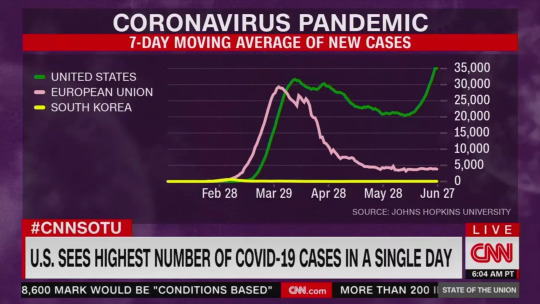
5. Almost all other nations whose citizens respected their scientists, and authority are almost fully recovered, and back to semi-normal. We seem to not care about our fellow citizens, or our scientists. That’s why it’s a FACT that we have the most cases, and most deaths in the USA. Non debatable. That’s why other states are not allowing Floridians to travel to theirs without a 2 week quarantine. That’s why other nations are looking into imposing a ban of US citizens traveling to their shores. We did not flatten the curve. We have created a new one. Facts.
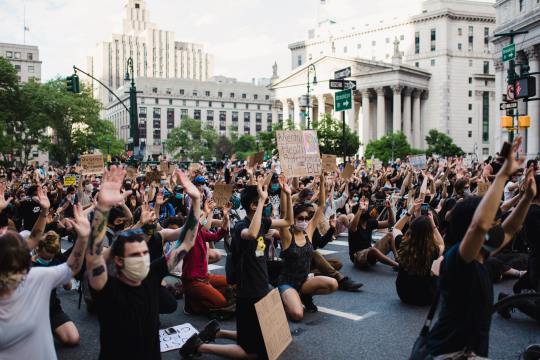
6. The Protests raised the numbers. NO. People not wearing masks, and gathering inside for long periods of time did. Texas, Arizona, Florida… all states with low protesting, all states that opened up early 2–4 weeks ago with some citizens that don’t want to follow any decency rules, are showing the increase. In almost all the film you watch, you see the vast majority of protestors wearing masks. They have been diligent about this. Could some of them have spread it, but of course, we cannot rule that out. But being outdoors and wearing masks have all helped. Close proximity, heavy breathing, poor circulation/ventilation, all indoors is a recipe for disaster. Alcohol makes it worse. Let the politics go. This is a humanity thing now. We need to squash this for all of us, not to prove a president or governor is right or wrong. People shouldn’t die for political loyalty during a pandemic.
7. Masks work. There is science around this. Every nation that has seen a drop has it’s citizens masked up. You are wearing it mostly to not infect others if you are currently asymptomatic, but have the capability of spreading it. Like all things(consider seatbelts, airbags), can you still get sick & die. Possibly, but the risk is significantly reduced. And NO, you cannot faint or die from CO2 poisoning,. Tell that to the doctors that wear stronger masks, and do 12 hour surgeries. You can wear that mask for your grocery run. Calm down.

So what do we do… what can we do? Somethings are simple, and some we must rely on the experts to help. Social distancing, and masks are easy, but let’s also avoid enclosed places, time with our elderly relatives and friends, and large gatherings. As we maintain those guidelines, we wait for our incredibly gifted medical & scientific organizations to come up with solutions, medications and the vaccines needed to shield us from this long term. But that requires time. Like HIV, and other diseases that had high infection and death rates, we had to put a plan together to avoid getting the disease, testing ourselves and our loved ones, and being careful. Did we eradicate it? No. But are we getting closer and closer to beating it? Yes. One main difference is when we heard or saw stories about HIV/AIDS deaths, the pictures and the stories were gruesome. The media has kept away from showing how bad the body does with this disease, how it disfigures and scars your lungs, or how it constricts your blood flow, causes cardiac swelling and scarring, or even how it causes brain inflammation encephalitis, seizures, loss of consciousness or strokes. This is a scary disease, but doesn't sound so scary when compared to the “Common Flu.”
In addition, we have been here before. Referencing the CDC: The 1918 influenza pandemic was the most severe pandemic in recent history. It was caused by an H1N1 virus with genes of avian origin. Lasting February 1918 to April 1920, it infected 500 million people–about a third of the world's population at the time–in four successive waves. The death toll is typically estimated to have been somewhere between 17 million and 50 million, making it one of the deadliest pandemics in human history.

Mortality was high in people younger than 5 years old, 20-40 years old, and 65 years and older. The high mortality in healthy people, including those in the 20-40 year age group, was a unique feature of this pandemic. Control efforts worldwide were limited to non-pharmaceutical interventions such as isolation, quarantine, good personal hygiene, use of disinfectants, and limitations of public gatherings, which were applied unevenly. Social distancing measures were introduced, for example closing schools, theatres, and places of worship, limiting public transportation, and banning mass gatherings. Wearing face masks became common in some places, such as Japan, though there were debates over their efficacy. There was also some resistance to their use, as exemplified by the Anti-Mask League of San Francisco. Vaccines were also developed, but as these were based on bacteria and not the actual virus, they could only help with secondary infections. A later study found that measures such as banning mass gatherings and requiring the wearing of face masks could cut the death rate up to 50 percent, but this was dependent on them being imposed early in the outbreak and not being lifted prematurely. So we’ve been here before, and we have an outline of time, spread, and effective solutions till a vaccine/medication is made. We just need to listen to it, and follow through. We are significantly more educated, and our science has come a long way since 1918. If we take this seriously, and practice good habits, we will beat this thing. When it comes to work, this is a huge issue. For a large segment, working from home is available. But for many others, this simply does not exist. This is when we need an empathetic and properly functioning government to step in. All retail businesses and the like should have been granted immunity for the year from expenses, leases, and other fees. Emergency & Essential staff should have been provided the proper PPE and an upgrade in their pay. Unemployed folks should have had an easy time dealing with collecting unemployment benefits, and a new assessment program should have been created to teach them how to do work from home jobs to get them back in action sooner than later. These are just a few of my ideas, but many others can be found online that can easily be implemented. Forcing a parent to choose between their small business and feeding their family during this crisis is an impossible position to be in. Unfortunately we did not care, and chose to bail out billionaires, and Companies that should have been more diligent about saving for a rainy day or using the insurance they can afford to shield themselves from collapse.

We all get it. This is an emotional time, families are struggling stuck at home with each other or with homeschooling their kids, businesses are suffering or have shut down, our entire way of life has been dismantled. I know 13 people that have passed away from this. I’ve heard of over 100 stories in network that have had it, and are battling it. Some winning... some struggling. I have countless family and friends on the front line fighting this disease. Many in my immediate family circle. If we don’t ban together and beat this thing like other nations have by being unified... then the disease has won in more ways than one.
0 notes
Quote
Every single voice in your company, is a voice for your company.
Brian Jacob
0 notes
Text
If you don't focus on customer service, you won't have any customers to service!
Brian Jacob
0 notes
Text
Pass on the Mentorship
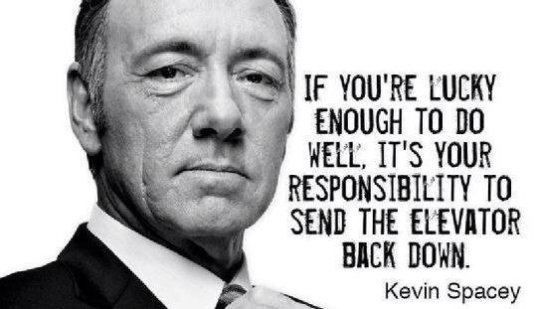
People often ask why I’m so willing to impart advice, or give instruction when it’s not being paid for. Being a Consultant is part of the work I do, but being a Mentor is who I’m turning out to be.
Raj & I have created a culture were folks have access to our time. We teach each other, and everyone that wants our advice. As consultants, we do our best to steer you the right way, give you the pros and cons of each step, and create strategic partnerships for you. But for a few of our team members and friends, we can’t help but give it away. We just ask the same in return. It’s the easiest way to make sure your company is firing on all cylinders. A-Players teach & nurture B&C-Players, lifting them to excellence. They in turn feel inspired to grow, and often learn new things to impart back to the team. Keeping all of us growing towards betterment. You see we learn 95% of what we teach others, so it’s also the sure fire way to obtain mastery.
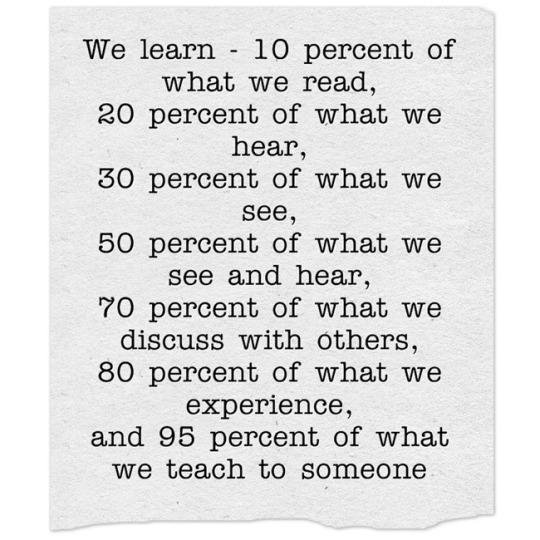
I think we are all teachers in some way. We all find different ways to exercise that skill. I was mentored in a very "story teller” way. When I had issues in the company I worked in, the owner, who was my mentor would tell me a story. Just very random. After a few of these tales, I realized he was literally telling me what to do. I had to hear it, not just listen. I had to dissect it. He did not want it to be obvious. He wanted to make it as close to experiencing the real thing as possible.
So I’ve been mentored pretty well, and I’ve always stated I would owe my success to that Mentor. So it’s just natural that I feel indebted to pass it on. Ironically I mentor in the same way as my Mentor did... but in varying degrees. At times I have to state the obvious, or my patience runs thin. That’s no fault of my mentees, just a clear indication that I have some more learning to do as a mentor.
To mentor well, you need to dedicate time, find great folks to pass things onto, and set goals for them to attain. If they are not willing to learn, try what you teach, or execute at a high level, you could be wasting your time. Set goals for them to achieve in their specific business. If they are not willing to do so, they aren’t taking you seriously. You may also need to ask more than you answer. Allow them to obtain the answer by nudging them in the right direction, not by providing the answers.
Another main aspect to true mentorship is allowing or even encouraging failure. Allow them to make mistakes. If you're not failing at something, you're not trying hard enough to discover new skills or talents. Don’t let your mentees get comfortable. Push them to fail, and encourage them to persevere. Now of course a few things just won’t come naturally to some. It’s your job to realize that, and move on to what’s next for them to learn.
But when it all comes together, and you see progression, it’s an amazing feeling. There is this purity in seeing someone succeed without any direct benefit to yourself. It’s gratifying, and can often inspire you to continue working towards greatness.
As a mentee you are never really done either. I’m actively on my hunt to find my next Mentor. We have so much learning to do, and so many have come before us with that knowledge and experience. As we age, there are better, faster, more efficient ways to do things. So if we take the time to listen to our mentees, we may learn a few things too.
At Collective Ventures, we've been fortunate to have mentors in almost every category. To that point we’ve virtually created a teaching center. Every specialist teaches in collaborative meetings, brain storming sessions, hallway chats, coffee breaks or 1 on 1’s. We are so thankful to have put such a good group of folks together. And it’s relevance is being seen. Just recently, we’ve found ourselves in talks with Broward College to participate in their entrepreneurship program, mentor, and bring on interns that are ready to learn, absorb, and execute.
So go out there and find a mentor… then go pass it on!
0 notes
Text
Why Collective Ventures was needed.
In 2015, our Digital Agency had begun really working well with many companies that were relevant collaborators in the efforts to provide success to our clients. We would use various combinations of teams not central to DB Collective. Companies like SEO, PPC, Content Writers, Social Media, Photography, Videography, Public Relations, Coaching and even Legal. At one point I just said, we need to create a location that would unify all these companies in one space. This way the client has immense resources in one location, and can count on successful launches of their products or services because the companies would work well together.
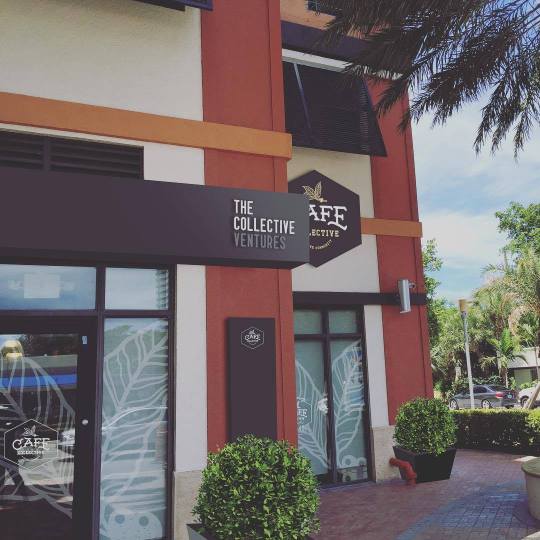
So I set off on the journey of researching how this could be possible to create. And what other tools we may need to make the concept more viable, successful, and scalable. Raj & I had already been doing sweat equity investments into companies were the founder could not fully fund their projects. Some of them were doing well… really well. So we decided a formal accelerator would make sense. Why not? With the combined power of 24 companies all central to business success, the possibility of many of them working on your project with their primary skills, plus the bonus of all the mentorship that can be provided, these new startups would have a higher chance of success.
It is my belief that there are 5 core attributes needed for a successful startup. -First you need a Solution to a problem…. but a problem many people have. Scalabilty is important. If your product helps 1000 people, it’s a great private tool but not a business. -Next you need Knowledge. What have you learned that you can contribute to your solution, and it’s overall growth -Next there is Experience. How have you executed projects before. Can you build and manage a team. Bring in sales? -Next you need Courage. It takes a lot for an entrepreneur to become one. Leaving a comfortable job, or lifestyle is difficult. -Lastly you’ll need Financing. It takes money to make money.
We hear of many talented employees that have put in 20 years in their business, and have figured out a better way. But a mortgage, kids in school, and other obligations create barriers for the "Courage and Finance” pieces to fit in. Or successful or wealthy entrepreneurs that want to jump into the next hot industry, but a lack of technical knowledge, or experience can inhibit their success. That’s were we can shine. Think of us as your very own talented, connected, and financially secure Co-Founder. So we spent 1 year researching and building the plan, and about 1 year putting the entire 24 independent & non-overlapping companies together to build out our "Innovation Center" or "Business Mall." Culture was key. For some categories we have over 200 applications. For others we did struggle to find the perfect match or teach them our concept so they would want to participate. Each company was handpicked by me to not only offer up their amazing service, but to be amazing partners on investments, the perfect collaborator on accounts needing that particular service, and most of all… amazing individuals whose integrity, loyalty, and humility shine brightest. We are a family here… and that’s why we work so well together! But it just wasn’t done yet. We looked back and chose the main resource most startups need when they quit their jobs, or take the leap to work twice as hard and build a company while working their 9-5... a place to work. You generally have two options. -Most folks jump right into a Coffee shop. Great starting space, and the fuel to keep you working hard. But not the best place to meet with potential clients, or for pitches. Privacy levels are the best, but again, it’s a great start. And some of the best businesses have started out being sketches on a cafe napkin. -Second are Co-working spaces. A much better option, and many include coffee, and new friendships. They often have rooms for rent as well, but the barrier to entry can sometimes be steep. $150 -$1000 a month for seats with little collaboration or sustained friendships, or fixed resources. But it’s a brilliant option to get going if one can afford it. So we set out to change that. Our “Community Co-Working" Space has 70 seats inside, and 40 seats outside, and it costs $0 to come in and work a full day. Gigabit internet speeds, and an amazing environment. We know many amazing businesses start from home. Well, think of us as home without the distractions… but with all tools needed to be successful. People may assume we are disrupting Co-working, but we’re just tweaking it for the betterment of the entrepreneur.
Our beautiful cafe is working with Switchbox Roasters for an amazing coffee experience, and will also serve Beer & Wine. 7 conference rooms available for rent for those private meetings. A much better and cost efficient jumping off point. But not only that, as a community they all have 24 business resources to tap into. As you continue to be a remembered face at Collective Ventures, the ventures will truly give back. In addition daily talks in our space will inspire you to get started on your project, engage in the arts, or even be a better version of yourself. With events such as business talks, speed leads, wine or scotch tastings, pitch events, entrepreneurial events, educational seminars, and more… you will truly help shape the arts and technology ecosystem here in South Florida.
Come in for a cup of coffee, enjoy the art & the talks, and you may leave with a business! -Brian
www.collectiveventures.org www.instagram.com/collectiveventures https://www.facebook.com/collectiveventures.org www.dbcollective.co
Collective Ventures: an Innovation center w/ 24 unique Creative & Technology companies, a Startup Accelerator & Investment Firm, and a Community Coworking Cafe located in a 7000 sq ft space in the Waverly Building on Federal(US 1) & Broward Blvd, in the heart of Downtown Ft. Lauderdale, FL, our Creative & Tech Innovation Center is the home of 24 Unique companies specifically chosen to help you. They are: Creative Agency, Web & Mobile Developer, Startup Advisor, Startup Accelerator (5 Million to invest), Accountant, Lawyer, SEO Firm, Adwords/PPC Firm, PR Firm, Photographer, Videographer/Media Agency, Content Writer, Lead Generation Firm, Email Marketer, Social Media Firm, Business Coach, Business Broker, Merchant Processing, HR & Payroll and Staffing Agency.
0 notes
Text
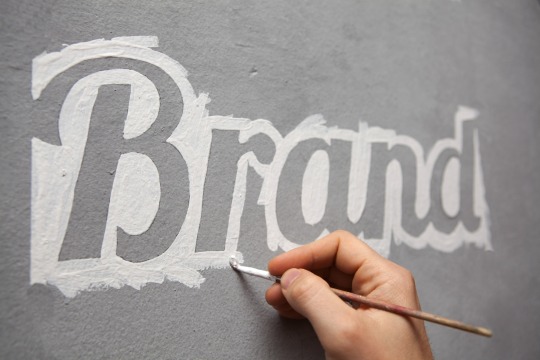
Is your Branding building awareness? Are you authentic. Do you feel real with your audience. Have you built evangelists to share your stories. Do you have client reviews on your website? And above all, are you consistently providing relevant content on your site that demonstrates your authority in your field. -Branding. Is your logo memorable. Does it leaving a lasting impression or create brand awareness?
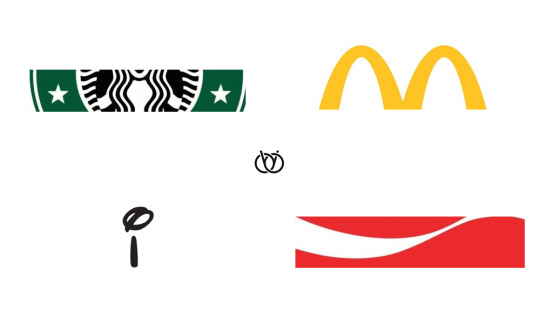
There are companies out there that leave such a lasting impression that seeing just a small portion of their logo makes the brand recognizable. I'm certain you can all identify each of the brands above by seeing just the portions shown! That's the power of branding. How about your marketing and advertising. A lot of new companies think they need something that will have global appeal before they get off the ground. But you need to plan for the zip code first, then the town, then the county, then the state before you reach nationwide or global success.
Don't be scared of altering your branding as you hit milestone changes in your success. Almost all Fortune 500 companies have done it.
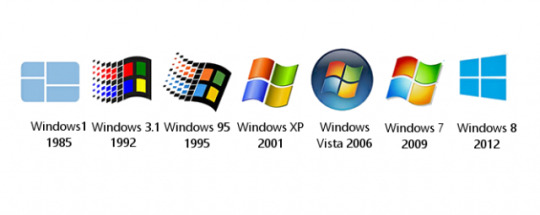
If one of the richest men in the world can allow the logo of one of the most valuable companies in the world to be changed this many times... so can you. Or take a look at the most commonly thought of brand selling coffee at a premium:

Your brand should be you, but evolve with your company's constantly "growing-changing-demanding" audience.
At the end of the day, there are so many great businesses that die because no-ones heard about them. And on the flip side, there are some crappy businesses out there that survive because everyone's heard of them. -Authenticity is a very important thing. Small businesses that demonstrate they know their consumer better, and a builder better products to compete with the titans are winning. Take for instance, Uber vs Cab companies, DollarShaveClub vs Gillette, Huffington Post vs Traditional News Papers, Netflix/Hulu vs Cable Companies, or even Netflix vs Blockbuster. If you can show that your content is really valuable, and authentic to your user, you can in fact beat out the big guys.
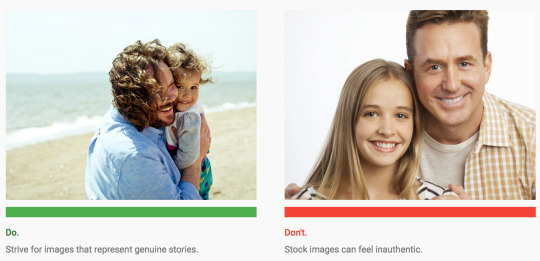
Authenticity can be the little things. Take real pictures… STOP using stock photos that closely resemble what you want to represent. It’s not hard. Grab a camera, take a pic, and use a filter. You're much better off than grabbing fake pictures off the internet. Authenticity also requires engagement. If you put out great content, and potential customers or fans engage with you on that topic, you must engage back. Don’t make it feel like a robot posts for you. Talk to your audience, build a thread of engaging conversation. Customers value this. Above all, respond to negative feedback. Customers usually hate just a small piece of the experience. Fix it for them. A simple response or gesture can turn a negative review into positive evangelism. Which leads me to my next point. -Evangelism. It’s more important than ever these days, because it transcends the spoken referral. We have Social Media, review sites, a forwarded email, and more. Evangelists are free spokespeople for your brand. They are often happy to share you because they want to. And that share can spread your thoughts to millions of people quickly. “People share, read and generally engage more with any type of content when it’s surfaced through friends & people they know and trust.”
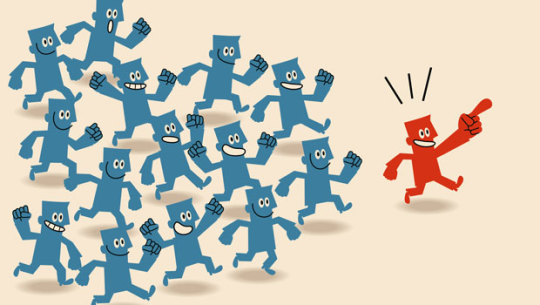
On Facebook only 1.5% will see a Facebook Page post unless you boost it, but 33% of your friends will see it if you share it on a personal page. So if you have 10,000 fans on Facebook, you get 150 eyeballs on that post. If you have 10 fans share the post on their personal page with each fan having an average of 500 friends, you have 1,650 views. See the difference. 10 loyal fans are more important than 10,000 people that hit like on your fan page.
How can you build great Evangelists? 1. Keep all of your customers as happy as possible. 2. Go above and beyond to be helpful to your customers. 3. Respond & Act on any feedback that's been given. It's often after this moment that Evangelists are born. 4. Listen to your customers. They use your product/service. They are best positioned to have advice on how to better it.
-Content. Quality content is important. Not only does content allow you to provide your customers with knowledge about your products or services, it helps Google decide you Search Engine Optimization Fate. The more relevant content you provide, the more valuable you are to Google as a quality result.
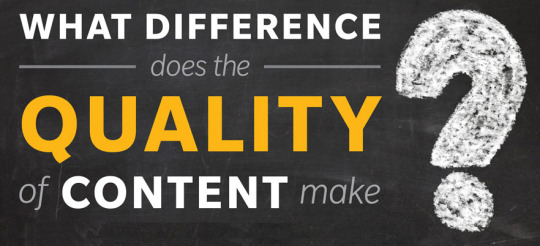
Above all, you become a higher authority on your subject. Google’s new algorithms penalize you for have keywords stuffed into content that has no actual relevance to the subject of your post or to your audience. But if you provide quality content, engaging your audience to stay longer on your website, Google rewards you. Content also helps you stay relevant and authentic. If you can’t provide meaningful stories, experiences, or expertise on your products, how good can you actually be? Ask yourself that when you decide to share posts online, or hire companies to fake it for you. Take a serious stance on providing quality content and you will reap the rewards from both your customers and from Search Engines.
-Brian -- DB COLLECTIVE: We’re a Collective of 18 entrepreneurs, designers, developers, and thinkers. Our objective is to help you grow on all touch points. Whether it's thinking through a new process, attracting new customers, creating a better social presence, or building a product or service, we'll help you attain your goals. Our combined experience in consulting, development, marketing and creative has helped over 150 businesses, and more than 15 Fortune 100 & 500 Companies. Visit us at www.dbcollective.co
1 note
·
View note
Quote
Raise you words not your VOICE. It is rain the grows flowers, not the thunder.
0 notes
Photo




The simple handkerchief is – by most accounts – at least a few centuries older than the modern suit. In fact, it dates as far back as Shakespearean times (those of you who weren’t sleeping through English Lit. will remember it being an integral plot device in Othello), with many claiming this humble accessory has its roots in the square-shaped cloths carried by Richard II’s courtiers for the purely practical purpose of nose-blowing.
Since then, the pocket square has become a sartorial staple for the modern man, proudly presented in the breast pockets of Hollywood stars and Presidents alike. Whether cotton, linen or silk, plain, patterned or printed, one of these square pieces of cloth has the potential to pull an average tailored look into the A-grade.
A Pocket Square Primer
So, how to reach pocket square perfection? Here are a few simple rules for nailing this subtle sartorial detail:
No Matchy-Matchy
“One of the big pocket square no-nos for me is when they directly match the tie, like they came together in a set,” says Dan Rookwood, US Editor at Mr Porter. “A pocket square should be used to add some interest in terms of colour and/or pattern.”
With this in mind, start by considering the rest of your outfit and then coordinate your accessories accordingly, without matching exactly. For example, a hint of burgundy in your pocket square’s print or pattern will team well with a burgundy tie.
Colours & Patterns
While the possible combinations are endless, it’s worth starting off by stocking up on some of the essentials to ensure that you’ll always have something outfit-appropriate to hand.
Plain colour styles are an absolute must, their simplicity and lack of pattern making them easy to match with your ensemble. Especially worthwhile investing in when taking your first steps into pocket squares is a classic white version – now widely considered as much a wardrobe essential as the Oxford shirt or Derby shoe.
Once you’ve got your plain colour bases covered, it’s time to introduce pattern. Prioritise timeless motifs – think paisley, polka dots and checks – in rich jewel tones like burgundy, navy, and bottle green, as well as fail-safe neutrals like white, grey and black.
Kingsman Drakes Silk Pocket Square
White Pocket Square
Thomas Pink Woven Pocket Square
Reiss Garbo Polka Dot Pocket Square Emerald
J. Crew Silk Pocket Square In Paisley
Ted Baker Maybee Paisley Silk Pocket Square
CANALI Checked Wool Pocket Square
Classic Brown Country Check Pocket Square
Marwood Patterned Woven Silk Pocket Square
Brunello Cucinelli Double-faced Patterned-wool Pocket Square
Aquascutum Marron Linen Floral Pocket Square Blue/red
Paul Smith Shoes & Accessories Printed Silk Pocket Square
Thomas Pink Woven Pocket Square
T.m.lewin Lilac Silk Pocket Square
Reclaimed Vintage Pocket Square
Sky Plain Cotton Pocket Square
Turnbull & Asser Bordered Silk Pocket Square
Lanvin Printed Silk Pocket Square
Cleanliness
As pocket squares tend to be handled, tweaked and tugged a lot throughout the day, they can very quickly become a bit grubby. Intended as a pristine finishing touch to a smart ensemble, a pocket square should always be perfectly clean.
A dirty patterned one will look dull and lacklustre. A dirty white one will look, well, plain dirty. So, be sure to wash yours (according to manufacturer’s instructions) if they’re not looking their best.
Rolled Edges
Although a carefully hand-rolled edge usually denotes a higher price tag, it also denotes a much finer piece of craftsmanship.
Unlike machine-sewn edges, which tend to look flat and often feature an abundance of exposed, loose thread, hand-rolled edges are carefully rolled and stitched by hand to produce a unique finish.
One For Blow, One For Show
If you really must – taking a leaf out of your eighty-year-old grandmother’s book – blow your nose on a handkerchief, then don’t use the one in your pocket. Keep a spare handkerchief in your hip pocket ready for such eventualities. Right next to your boiled sweets.
Styling Your Pocket Square
Before beginning to assemble a wardrobe of killer hankies, it’s imperative to observe the art of the fold. “Pocket squares can look a little bit fussy if they are over-styled, looking like ornate pieces of silken origami,” says Rookwood.
So how best to navigate this sartorial minefield? Stick to the time-honoured folds below and you can’t go far wrong:
Square Fold – The Classic
The square fold, sometimes known as The Presidential, is probably the most easily executed and versatile fold. Just as effective with a formal tuxedo jacket and bow tie as it is with a blazer and knitted neck tie, it’s perfect if you’re finding your feet with folds.
According to Rookwood, opt for cotton to get that super sharp red carpet-ready finish: “Cotton pocket squares offer a crisp edge when pressed [allowing you] to create that squared off straight line like Mad Men’s Don Draper.”
Colour-wise, a white pocket square is a classic that every man should have in his collection and it lends itself well to this fold, but a light blue or flecked style both fit the bill too. If you’re strapped for cash, head to the high street for affordable options, or try T.M.Lewin, which offers a good balance between price and quality.
Image: Charles Tyrwhitt 2015
Instructions
Start with the square fully unfolded.
Fold the square to the width of your jacket or blazer pocket (straight down the middle in most cases).
Fold from the bottom to form a rectangle that’s the same width as your pocket, and around half an inch longer.
Place the folded bottom edge into your pocket, fixing snugly at the base; adjust so that there is only one smooth strip of fabric visible at the top of the pocket.
One-Point Fold – One Corner Up
Not much more taxing than a square fold, but definitely more eye-catching. The one-point fold is versatile enough to be worn for work or play; just base your choice of fabric on the skew of your look.
For something a little more buttoned up (i.e. a classic business or formal outfit), try a crisp cotton style – preferably in white or light blue – to achieve a sharp triangular shape. For something a little less reserved, plump for a silk pocket square – in a bold hue like orange, red, or whatever colour best complements that suit you’re wearing – folded into a looser one-point.
If you do end up going for silk, then make sure your square is made from top-grade fibres. Turnbull & Asser tend to cater to dandyish leanings and have a luxurious offering but Savile Row brand Drake’s is also worth a look for quality that falls within a more affordable price bracket.
Image: Austin Reed SS14
Instructions
Start with the square fully unfolded and facing you in such a way that it looks like a diamond rather than a square.
Fold the diamond up over itself, then fold the doubled-over corners of the base of the triangle inward as far as is necessary for the folded square to be around the same width as your jacket pocket – it should look like an envelope.
Place the folded bottom edges into your pocket and fix snugly in place so that the only thing visible is a triangle at the top of your pocket.
Two-Point Fold – Unique & Sophisticated
Consider this your right of passage as a budding pocket square aficionado. The two-point is a more complex fold that you’ll probably need to practice before you get it right.
Well suited to silk squares, the two-point’s statement-making structure allows you to play a little faster and looser with your choice of colour and pattern – a bold check complements this fold’s angular lines particularly well.
Duchamp and Thomas Pink are particularly established when it comes to larger checks and plaids, while Reiss is worth stopping by for a slightly cheaper, more subtly patterned options. Ideally, you’d wear this attention-grabbing fold in the chest pocket of a blazer, but there’s also the option of tearing up the rulebook and slipping a bright pop of colour or a punchy polka dot into a dinner jacket.
Image: Burton AW15
Instructions
Start with the square fully unfolded and facing you in such a way that it looks like a diamond rather than a square.
Fold the diamond up over itself, then very slightly angle the fold so that it’s off-centre – these two offset corners will be the visible points of your square once it’s in your pocket.
Fold the doubled-over corners of the base of the triangle inward as far as is necessary for the square to be around the same width as your jacket pocket.
Place the folded square into your pocket (folded rectangular side first) and then adjust so that only two off-centred triangles are visible.
Three-Point Fold – The Pocket Square Aficionado
Mastered the two-point fold? Ready to take your pocket square proficiency to the next level? Then look no further: the three-point fold, or ‘Crown Fold’ as it’s sometimes known, is a bona fide showstopper.
As the folds are smaller with a three-point, you’ll want to reflect this in your choice of motif, so perhaps opt for a gingham check from the likes of J.Crew or Charles Tyrwhitt so your pattern’s impact isn’t lost.
Alternatively, take a leaf from Frank Sinatra’s book and try a bold plain colour style in silk teamed with a dinner jacket – rakish sophistication at its finest.
Image: Digel SS15
Instructions
Start with the square fully unfolded and facing you in such a way that it looks like a diamond rather than a square.
Fold the diamond up over itself, then very slightly angle the fold so it’s off-centre – these two offset corners will be two of the three visible points of your pocket square once it’s in your pocket.
Bring the bottom left hand side of the triangle up to meet the two points at the top, positioning so that you have three, evenly spaced points.
Fold the remaining bottom right hand corner of the triangle inward so that it’s about the same width as your pocket.
Place the folded square (straight side first) into your pocket, adjusting so that there are three points visible.
The Casual Fold
While this is probably the simplest of all the folds, it’s certainly not to be sniffed at. Boasting plenty of body, the casual, or ‘puff’ fold, is the prime option for playing with pattern as it displays the most fabric surface area.
Silk – rather than cotton – is the ideal choice for achieving the level of volume you require with this one, and feel free to go big with your pattern choice too, whether it’s paisley, a sizeable check or polka dot that takes your fancy. The likes of Rubinacci, Etro and Richard James offer some superb statement options at the luxury end of the market, while those shopping on a more modest budget should try Scotch & Soda.
Remember that this is a strong look and so is best suited to smart separates rather than a business suit.
Instructions
Start with the square unfolded, but rather than laying flat, pinch it with two fingers at the centre so it’s slightly raised with the edges left hanging down.
Still pinching the centre, use your other hand to gently tug on the loose edges, working to pull the square into a loose tubular shape.
Then, grab the raised square about halfway up its length with your other hand, tightening to create a puff at the top.
Fold the pocket square in half in such a way that the loose edges are concealed from view, positioned behind the puff.
Place fold first into your pocket so that the puff is visible.
Video Tutorial: 6 Ways To Fold A Pocket Square
The video below visual demonstrates how to fold a pocket square in the five ways we’ve outlined above, plus another thrown in for good measure.
Final Word
Hopefully these tips and tricks will help you on your journey to pocket perfection. And don’t forget that while the whys and wherefores of wearing pocket squares are good to know, sometimes rules are meant to be broken. So why not push the boundaries a little?
Have you tried out combos that contradict traditional guidelines and pulled it off with panache? Or do you always advise playing it safe with pocket squares?
(via The Complete Guide To Men’s Pocket Squares | FashionBeans)
0 notes
Photo
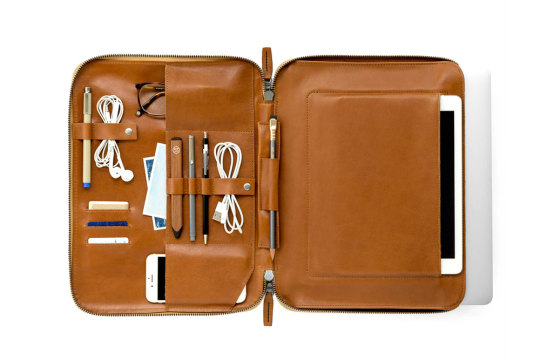
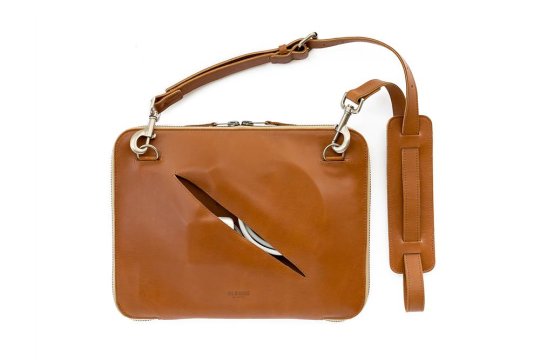
Now this is a beautiful laptop bag!
(via This Is Ground's Mod Laptop 2 Customizable Leather Case)
0 notes







